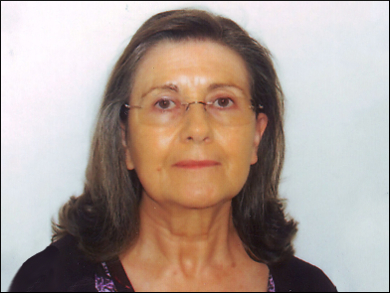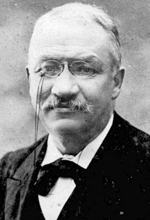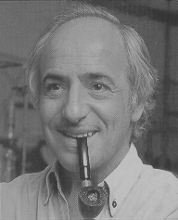
Professor Maria José Calhorda is the current President of the Sociedade Portuguesa de Química (SPQ), the second woman to hold this office.
Here she speaks to Drs. Eva Wille and Karen Hindson about the challenge of catching the public interest in chemistry from elementary school age onwards.
How would you describe your society and its members?
Sociedade Portuguesa de Química (SPQ) is a relatively small society with ca. 1000 members, 15 % of them students. Most of them are university professors and researchers, and student members are usually beginners in a research lab, either undergraduates or master students. For several reasons, high school teacher members have decreased in the last decade. Some of the reasons clearly do not depend on us, and that has made it more difficult to keep them engaged. However, education is one of our priorities and, in the latest big society meeting (June 2015), a specific program devoted to educational chemistry attracted more than 50 high school teachers. Industry is not very present in our lives, or in jobs offers. Industrial members are also hard to attract, either as collective members and partners, or as sponsors of regular activities and prizes.
How would you describe the role of your society today?
Our society is present in daily life, but not so much as we would have liked. Indeed, in general we are consulted by some governmental bodies about topics related to the teaching of chemistry in secondary schools, namely national exams and some issues on programs. This is particularly the case when delegations from other countries wish to know how chemistry is taught in Portugal. To intensify this advisory role, we have “resuscitated” the meeting of the Division of Chemical Education, which was not very active in the past ten years, and will now take place every two years. This is the first step in the organization of more specific activities.
Journalists (newspapers, TV, radio) approach the society for information, essentially when the chemistry Nobel prize is awarded. This prestigious award that attracts universal interest allows us to communicate chemistry to the general public.
How else does your society communicate science to the general public and potential chemisty students?
The society counts on a group of chemists, whom I take this opportunity to thank, who always help us in various parts of the country with dissemination of chemistry in different contexts, but mainly secondary schools. As example, several presentations directed at a variety of public groups have been prepared, such as the lecture given in the International Year of Light (October 2015), in Alentejo, within a project aiming at promoting light technologies for a better life and sustainable development. A study was performed to evaluate the beneficial effects of the quality of light on the health of people in a village in Alentejo and its use as source of energy. The public included those responsible for the industrial units in the area of Sines and related activities, as well as students and teachers of technological schools.
We start to reach out to scholars through the Chemistry Olympiads when they are in secondary school. The society will participate in the new Olympiads to be offered to elementary school students from 2016 on.
We participate in open days at our universities, not always with an obvious association with SPQ. As SPQ, we organize all congresses and conferences with special incentives to graduate and undergraduate students, the national ones being organized throughout the country to make it easier for students to attend.
|
|
|
Figure 1. Professor Dr. Nuno Maulide (Portuguese born, now at the University of Vienna, Austria) was presented the inaugural EurJOC Young Investigator Award by Dr. Haymo Ross, Editor of the ChemPubSoc Europe journal EurJOC, at the 19th European Symposium on Organic Chemistry (ESOC) in Lisbon, a meeting co-organized by the SPQ. |
What projects is your society working on?
We are trying, at a bureaucratic level, to get more recognition from our activities and get a “public utility” label.
In addition, we are starting to work on a white book “Chemistry in Portugal” dealing with where chemistry stands in Portugal: how many chemists are working in universities and companies, what they are doing, what is the role and impact of chemistry, etc. With the white book, we want to be more aware of the role of chemistry. Other actions will help us to understand how society in general perceives chemistry. This book is therefore the first step in the design of a new strategy to disseminate chemistry and should help us to take more effective measures to improve the visibility of chemistry and attract more students.
To increase SPQ visibility we collaborate with universities and other institutions on the organization of open days and dissemination actions. The organization of chemistry Olympiads has been a regular activity in that context. They have been offered at a national level to students (about 13 -18 years of age), in collaboration with several universities, and there is a possibility of extending them to elementary school. The winners attend international competitions and an effort has been made to improve their preparation. Such activities help us to address the biggest challenges we face.
What are the biggest challenges that your society faces?
The first is to improve the acceptance of chemistry in Portuguese society in general and by the potential students in particular. The specific aim is to attract more chemistry students, and to raise the awareness of the population toward the real role of chemistry in everyday life and in addressing the global challenges facing the world today.
At a different level, but still related, we need to find a younger generation to take over the work at SPQ. The widespread retirement of university staff with almost no replacement means that too few young researchers have permanent jobs nowadays. This is a critical issue in Portugal.
What is the secret of running a successful society?
We try to make SPQ successful by putting a lot of volunteer work on the job, beyond the ever increasing university duties we all have. This centenary institution has always been run in this way and the directive board, at least since the last revival about 40 years ago, is elected for a period of three years. This lack of professional staff means that the management is not always as efficient as we wish, but we have managed to keep the balance between a healthy financial situation and the size of the permanent staff. While some tasks are well done, it is a permanent challenge to keep the accountancy and the day to day management under control.
We would like to disseminate chemistry more effectively and be able to provide an answer to all the questions and requests we receive (…and in time!) This is difficult to reconcile with the limited human and financial resources available and the need to keep the activities sustainable. This will probably call for a more professional management of our society.
Conference organization is carried out by the divisions and groups, strongly helped by the secretariat, which has become very professional in doing it.
How is a successful scientific meeting organized?
Quality of science is a must, but it is strongly helped by a nice location, the gastronomy, the involvement of the community, and a low registration fee. Since “successful” also means some profit, we try to have a large number of participants. Of course, this depends a lot on the type (national or international), the place (Lisbon and Oporto with an international airport located in the city, 5-10 min away by underground to the train reaching the center of Coimbra, Braga and Aveiro in 1:40 h – 2 h), the field (food chemistry or computational chemistry, for instance), not to mention the organizer.
What was the biggest surprise for your society in the last 10 years?
Joining ChemPubSoc Europe was very beneficial for us. In scientific terms it has put SPQ in a group of chemical societies as publishers of high quality journal in most areas of chemistry, giving to our members a feeling of belonging to a community and hopefully inspiring them to publish more high quality papers. At another level, it has contributed to the financial health of SPQ, allowing us to organize more activities and provide higher seed money for more simultaneous projects. It is also surprising that SPQ has a very dynamic group of young researchers who organize a congress every two years with more than 300 participants. In 2014 through their contacts, for instance, they succeeded in inviting two Nobel Prizes for Plenary Lectures.
Do you have any tips for such fruitful collaborations?
Fruitful collaborations seem to depend on friendly personal relationships and in general they are not passed on when either of the two sides retires from business. It happens, for instance, with collaboration protocols signed between SPQ and other societies to promote joint prizes or to organize conferences together. I keep seeing them suddenly appearing, after having been “asleep” for years, as has just happened with the Brazilian Chemical Society. This also shows the management difficulties we experience with the short term of office of the Board.
What aspects of your society are the most exciting?
A very exciting experience arises from the very large number of young students who participate in the Chemistry Olympiads each year and the enthusiasm they transmit, also extending to the hard work that the few selected to participate in international Olympiads put in their preparation.
The strong involvement and dedication of some young graduate chemists in the creation and development of the Group of Portuguese Young Chemists has been one of the most exciting recent developments. They have been organizing meetings and other activities with much success and will host the 1st European Young Chemists Meeting (1st EYCheM) in 2016.
It is also very exciting to see how our society can be so scientifically productive, with various national and international meetings (from the different divisions and groups) every year, which allow Portuguese chemists to be in contact with one another and with the foreign participants. In summary, we are a small society with high scientific activity.
Who are your most famous or notorious members, past and present?
The most famous members in the past, before SPQ existed, are celebrated in the prizes that SPQ awards every two years to the best chemists, essentially either as a career prize for a senior chemist (Ferreira da Silva), or to a junior chemist for his outstanding achievements (Vicente de Seabra). More recently, the Inorganic Chemistry Division created a prize named after Alberto Romão Dias, who started Organometallic Chemistry in Portugal in the 1970s and passed away prematurely.
 |
 |
|
Figure 2. Ferreira da Silva (left) and Romão Dias (right). |
|
What future opportunities do you see for your society?
The new groups and divisions of SPQ (Computational and Inorganic and bioinorganic) show well the dynamism of our members. We hope to keep organizing meetings of SPQ and to show how chemistry is central to other sciences. As an example, the division of medicinal chemistry is strongly connected to pharmaceutical faculty members.
We believe that chemistry is, and will continue to be, a popular subject of science.
Thank you for the interview.
Maria José Calhorda received her PhD from Instituto Superior Técnico, Lisbon, Portugal (1980) working on synthetic organometallic chemistry. She was a post-doc at the ICL, Oxford, with D. M. P. Mingos, and spent sabbatical leaves at Cornell University, USA, with R. Hoffmann (1987/88), at the MPI für Festkörperforschung, Stuttgart, Germany, with A. Simon (1995), and at the University of Marburg, Germany, with G. Frenking (2004), developing the interest for computational studies of inorganic molecules and materials. She is Professor of Inorganic Chemistry at the Universidade de Lisboa, since 1996, and received the Alberto Romão Dias prize of Sociedade Portuguesa de Química in 2011.
Authors
Eva E. Wille and Karen J. Hindson
1099-0690/homepage/news/maulide.jpg)